#Marriage of Henry VIII and Anne of Cleves
Explore tagged Tumblr posts
Text
6th January
Here are a few notable events that occurred on January 6th in history: Historical Events: Epiphany (Christian Tradition): January 6th is celebrated as Epiphany, also known as Three Kings’ Day, marking the visit of the Magi to the baby Jesus in Christian tradition. History of the Holidays: Jan 6, Epiphany 1066 – Coronation of Harold II of England: Harold Godwinson was crowned King of England.…
#6th January#AnniversaryOfEvents#Carl Sandburg#Coronation of Harold II of England#DailyHistory#FamousEvents#FamousHistoricalEvents#Franklin D. Roosevelt’s Four Freedoms Speech#HistoricalEvents#HistoricalFacts#HistoricalInsights#HistoricalMilestones#HistoricalSignificance#HistoricDates#HistoricMoments#HistoryBuff#HistoryFacts#HistoryHighlights#HistoryLesson#HistoryLovers#HistoryMatters#InterestingHistory#Joan of Arc#John DeLorean#Kahlil Gibran#LearnHistory#Louis Braille#Marriage of Henry VIII and Anne of Cleves#MilestonesInHistory#Nancy Kerrigan Attacked
1 note
·
View note
Text
On this day King Henry VIII married his fourth wife, Anne of Cleves

After a dismal first night, Henry quickly had the marriage annulled.
#Anne of Cleves#King Henry VIII#House of Tudor#monarchy#royal weddings#6 January 1540#Queen of England#portraiture#British history#annullment#royal marriages#On this day#UK
16 notes
·
View notes
Text
Sorry, David Starkey, but being a historian doesn't make you a relationship expert. Anyone who thinks King Henry VIII was a "good husband" just doesn't know what a good husband is. Showering your wives with gifts, calling them by endearing pet names, and treating them kindly only when you feel like it doesn't make you a "good husband".
First of all, he habitually cheated on his wives, which automatically made him a bad husband. Second of all, he only treated them well when he felt like it and completely withdrew himself from them whenever his passion dwindled, which also automatically made him a bad husband. He even had two of them executed, one for crimes he knew she didn't commit, which shows how little he cared for them in the first place. Third of all, he was only "immensely considerate when they were pregnant" because he valued the prospect of having male heirs over all else.
Yeah, he "liked women" but only for their beauty, sexuality and fertility. Like most men of his time, he couldn't care less about a woman's passions, personality, intellect or opinions.
As a husband, Henry VIII's negative qualities greatly outweighed his positive ones; meanwhile, his positive qualities were entirely superficial and selfishly or politically motivated. Your value as a spouse isn't as measurable by what you do as by why you do it, and (almost) everything a good husband does for his wife is out of Love. I would rather have a husband who can offer me nothing but love and respect over a husband who gives me everything but love and respect.
#king henry viii#tudor history#david starkey#love#marriage#respect#abuse#catherine of aragon#anne boleyn#jane seymour#anne of cleves#catherine howard#catherine parr#the tudors
6 notes
·
View notes
Text
youtube
#the marriage settlement of henry viii and anne of cleves#history calling#what if they’d stayed married?#Youtube
0 notes
Text
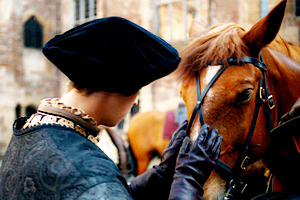
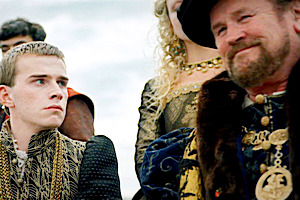
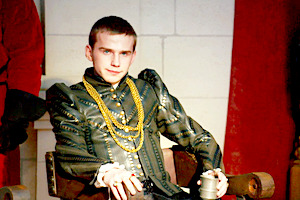

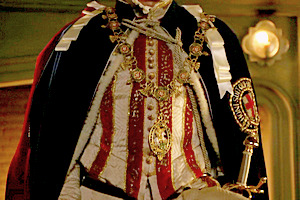
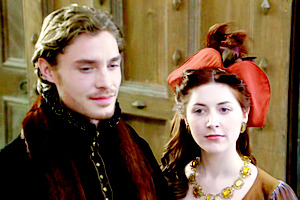
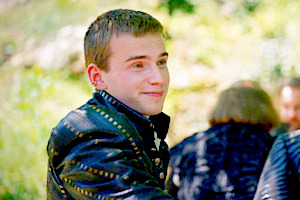
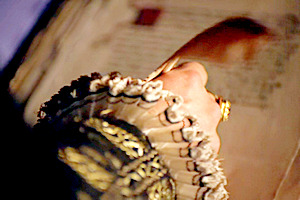
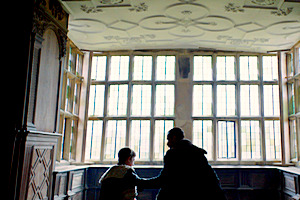
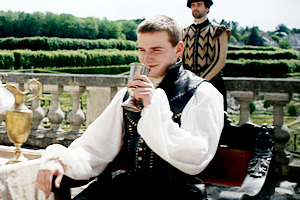
♕ @dailytudors TUDOR WEEK 2024 ♕
Day Three: Best Tudor What If >> 2/2 - HENRY FITZROY LIVES
Henry, Duke of Richmond, the beloved first son of Henry VIII born out of wedlock survives his sickness of 1536. Henry was made a possible heir to his father by the 1536 Successions Act until the birth of a child by his third stepmother Jane Seymour who had recently married his father.
During this time Fitzroy consummates his marriage with his wife Mary the daughter of the Duke of Norfolk. They later had four children, three sons one named after himself and his beloved father, one after St. George and one after his wife's father Thomas, and, a daughter named after his wife and beloved sister Mary, the latter stood as godmother to the younger Mary.
In 1537, his beloved brother, the future Edward VI is born, however Fitzroy's stepmother Jane only survives the birth by a few days. During the official mourning period Fitzroy provides a strong support to his father during his grief and emerges in court as one of the possible leading figures.
Henry then lived through his father marrying another two women, one ending in divorce and the other in execution, the latter being the cousin of his wife, but, during the time of this marriage, Fitzroy was abroad as he was the ambassador to France as he had been educated in the court of Francis I and was close friends with the Dauphin.
Once recalled from France after his father's disastrous fifth marriage he became a prominent figure in court after many leading courtiers left places vacant after being executed by his father (the gaping hole Thomas Cromwell left was widely felt even by his enemies). In this time he starts to take part in the council and education of his brother Edward with his father and appoints a few of his tutors.
In 1543 he was in attendance for his father's last marriage to Catherine Parr who is only six years his senior and was the sister of his close friend Thomas. During this time not only does Catherine bring his youngest sister Elizabeth back into the fold she also further nurtures Henry VIII's relationship with all his children and now grandchildren. Mary Fitzroy, Duchess of Richmond becomes a close confidant and part of the Queen's inner circle and the fourth lady of the court after her step-mother-in-law and sisters-in-law and even outranking the ex-Queen Anne of Cleves now known as the Kings Sister solidifying Henry Fitzroy as a possible heir after his own brother, debatably in front of his sisters.
During 1544 Henry accompanied his father on a campaign which later became known Battle of Boulogne where he learnt warfare and matters of the military.
In 1547 his beloved and larger-than-life father died, leaving his brother Edward VI a young King in his minority. Richmond's careful years of tutelage in the ever-changing court of his father proved to be a well-earned place in the council of his brother while he provided a much-needed balance between his brother's maternal family the Seymours, the rising faction of the protestants and the well-known conservative faction which included his sister Mary. During this time Henry became the leading figure of court and council and the well-accepted heir of his brother as he was the senior male.
Henry having strong links to France secured an advantageous marriage for his brother to Princess Elizabeth of France the daughter of his longtime friend which proved fruitful. It is debated that during the earlier days of his reign after his minority - before Queen Elizabeth had sons - Edward considered bestowing the title of the Duke of York on his brother.
Henry oversaw the marriages of his sons to daughters of the Seymour, Howard and Grey families and the marriage of his much-loved daughter Mary - who is said to be his favourite child - off to a son of John Dudley (Mary then ended up being a sister-in-law in marriage to her Tudor Aunt Elizabeth who had married one of John's other sons Robert).
Henry died strong in his position as the most prominent man at court after his brother, the King, having seen through and guided him in his minority. He was survived by his wife and four children.
#tudorweek2024#perioddramaedit#the tudors#becoming elizabeth#henry fitzroy#mary howard#henry viii#edward vi#my edits
72 notes
·
View notes
Text
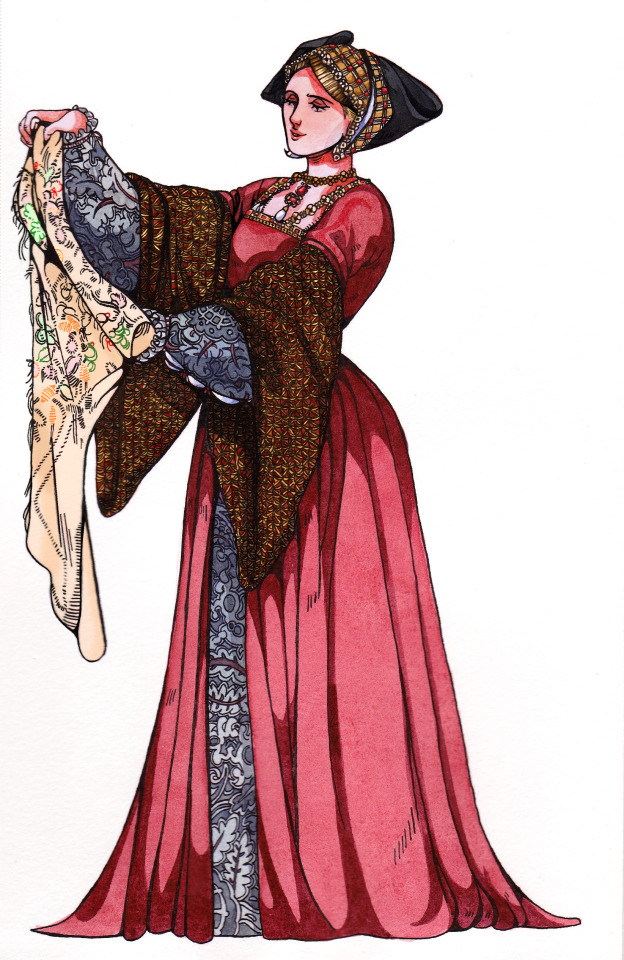
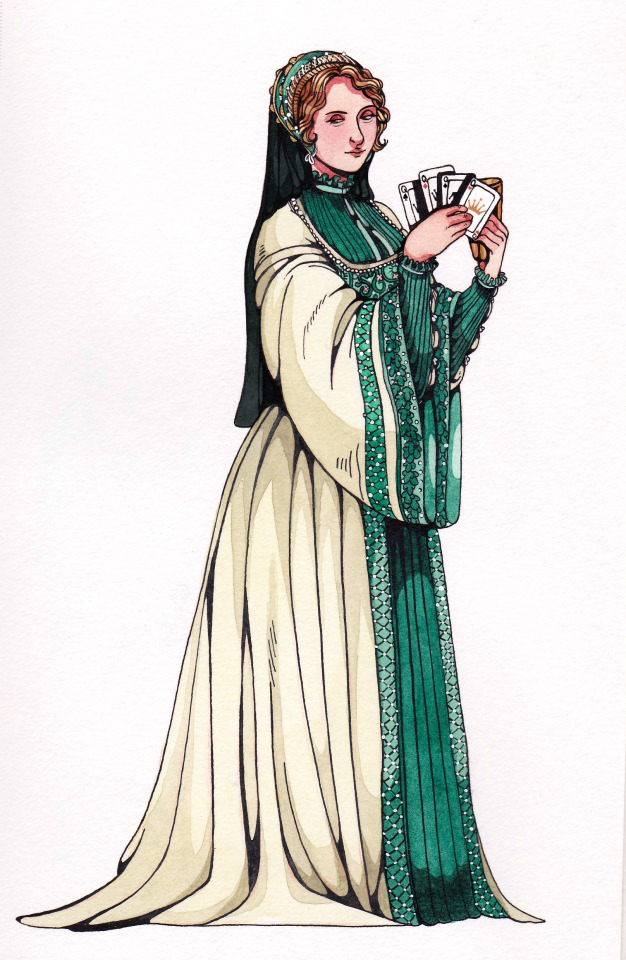
Next two of Henry VIII's wives: Jane Seymour and Anne of Cleves!
Putting a little explanation for these designs under the break:
Both of these women were painted by Hans Holbien, and their portraits by that artist played a pretty vital role in how I wanted to depict these women. For Jane, I decided to stick as close as I could, because I think Jane gets the most artistic interpretation than any of the other wives. She's a blank slate to a lot of directors in Tudor adaptations. This is brought on by the very scant records we have of what she was really like in life. We do know she loved quail while she was pregnant, and encouraged Henry to treat his daughter Mary better, which ultimately ended in her being welcomed back at court. Her family has kept samples of her embroidery through history, so it's fun to imagine her working on something in between breaks for her portrait.
For Anne, I went the complete opposite. Her Holbien portrait is extremely famous, but I feel like it creates the misconception that Anne never changed during the rest of her life in England. The portrait also has been used to cast doubts on her appearance (and whether or not her looks are exagerrated). In reality, Anne was dressed in typical English court digs when she arrived in England, and was noted to be very pretty. It wasn't until after Henry cast doubts on her appearrance, and even her chastity, in order to get out of the marriage as quickly as possible. I wanted to give these back to her, as white symbolised purity and chastity in this period. Anne lived a good life as Henry's sister, and outlived all the other of Henry's wives. She was known for being kind to her staff, and loving to pair cards with a good drink.
#henry viii#tudor history#tudors#jane seymour#anne of cleves#six wives of henry viii#illustration#watercolor#ink#renaissance history#fashion history#also anne of cleves is my favorite but don't tell the others because i love them all
748 notes
·
View notes
Text
Animorphs and SIX
Hi there! Cates here! Unlike Bug/Sol, I have listened to SIX, and I unapologetically adore it. So I asked her if I could take a crack at the ask about an Animorphs/SIX fusion.
To me, the way to do a match up of SIX and Animorphs would be to match each Queen with a host. The whole point of SIX is that the queens’ stories/lives are reduced to “just one word in a stupid rhyme” “cause in history [they’re each] fixed as one of six and without [Henry VIII] they disappear.”
SIX interrogates the familiar way we’ve always told a certain story, basically forcing us as the audience to confront our own complicity in silencing these women by only seeing them through the lens of a powerful man. Catherine of Aragon is a bitter divorcee, Anne Boleyn is a homewrecker, Jane Seymour is an ideal wife and mother, Anne of Cleves is ugly, Catherine Howard is a sl€t, Catherine Parr is a caretaker. Their stories don’t matter. Their voices have been silenced. They aren’t allowed to say who they are, all that matters is the shell presented to the world. They are disenfranchised and largely powerless, and they’re entirely defined by the man who literally dictated if they lived or died. Sound like any characters we know?
For me, a quick pairing would go as follows:
Catherine of Aragon: Alloran. Life did NOT work out the way he planned. Has a strict moral code. Brought low from a position of power and fame. Stuck in his role for a loooonnngggg time.
Anne Boleyn: Eva. Seen as a means to an end by the Yeerks, is much cleverer and more politically savvy than they’re anticipating, refuses to apologize for who she is, calls the Yeerks on their hypocrisy and bullshit.
Jane Seymour: Taylor. Seemingly wants what’s being offered (power, community, wealth, safety), but it’s a mistake to view her as blindly devoted to the cause. She’s grabbing as much power as she can in a situation where she’s largely disenfranchised and overlooked. She may not always understand the Yeerk empire, but they’re the best game in town and she’s pouring herself into her work because at least they didn’t toss her aside.
Anne of Cleves: Jake. The marriage doesn’t last long, ultimately he ended up with all the power and advantages from the situation. It wasn’t pleasant for him, but he came out on top. And he outlives the Yeerk Empire.
Catherine Howard: Tom. He’s a naive teenager who gets dragged into an impossible situation because he has a crush. He’s passed from Yeerk to Yeerk, each one seemingly worse than the last. He dies young, never having a chance to give voice to his own story, a child whose childhood was stolen.
Catherine Parr: Karen. She’s dragged into things against her will, but her imprisonment is NOT her whole story. She’s not looking to make waves or overturn the status quo, but she has so much life to live beyond her brief period of enslavement to the Yeerks. No one is going to remember her, but she probably doesn’t care because she’s too busy living her life.
63 notes
·
View notes
Text

6th January 1540 - Henry VIII married his fourth wife, Anne of Cleves. The King thought that Anne looked so different from her portrait he called her "The Flander's Mare"!
The marriage was never consummated, and was annulled six months later. Anne outlived the King... and all of his other wives.
21 notes
·
View notes
Text


Tudor property Henry VIII gave to Anne of Cleves "As far as ‘annulment gifts’ go, Wings Place might be up there with the very best of them. Given to Anne of Cleves in 1538 after she consented to end her marriage to Henry VIII, it is considered one of the finest Tudor houses in Britain."
34 notes
·
View notes
Text







Six Wives of Henry VIII
1. Catherine of Aragon (m. 1509–1533): Spanish princess, mother of Mary I. Henry divorced her because she didn’t produce a male heir, leading to the creation of the Church of England.
2. Anne Boleyn (m. 1533–1536): Mother of Elizabeth I. She was beheaded at the Tower of London.
3. Jane Seymour (m. 1536–1537): Gave birth to Henry’s only male heir, Edward VI. She died of postnatal complications shortly after his birth.
4. Anne of Cleves (m. January–July 1540): A political marriage arranged for alliance purposes. Henry found her unattractive and quickly had the marriage annulled. They remained friends afterward.
5. Catherine Howard (m. 1540–1542): Much younger than Henry. She was beheaded at the Tower of London.
6. Catherine Parr (m. 1543–1547): Outlived Henry. She was a strong, intelligent woman who helped reconcile Henry with his daughters, Mary and Elizabeth. She later remarried after his death.
#henry viii#catherine of aragon#anne boleyn#jane seymour#anne of cleves#catherine howard#catherine parr#the tudors#history
14 notes
·
View notes
Text

“There’s only 10 years between the ending of Henry VIII’s first marriage and the beginning of his last, that means at a certain point his wives were alive at the same time. I would love if a tv show/movie had a scene of all six of them in the same vicinity. Catherine of Aragon is Queen Consort. Anne Boleyn is her lady in waiting. Jane Seymour’s a woman at court. Anne of Cleves came as part of the ambassador’s retinue. Catherine Howard is a four year old who randomly came with the Howard entourage. Seeing as Catherine Parr was CoA’s goddaughter I don’t see any reason why she wouldn’t be invited to court either. I don’t care if this never happened, Hollywood stopped trying to be historically accurate years ago and this is far too cool an opportunity to miss!” - Submitted by Anonymous
#catherine of aragon#anne boleyn#jane seymour#Anne of Cleves#catherine howard#Catherine Parr#popular
98 notes
·
View notes
Text
I think one of history's most beautiful ironies is how Henry VIII is best known for two things: (1) splitting from the Catholic Church with one of his main motivators being that he wanted to divorce his first wife and remarry (2) his relations with his wives and daughters. There's literally a mnemonic for remembering the chronological order of his marriages to Catherine of Aragon, Anne Boelyn, Jane Seymour, Anne of Cleves, Catherine Howard, and Catherine Parr and what happened to them respectively (divorced beheaded died, divorced beheaded survived). And true, a lot of people can only name one or two of his wives and or/daughters if any at all, but the way he brutalized them eclipses almost everything else he did in his near 40 year reign. He's known as a shithead misogynist first and foremost and he never really saw any sort of negative consequences for this during his life, but it's irreparably tarnished his historical reputation.
If you were to randomly pull a person from everyone on earth who knows about him and at least has a vague idea of who he was, how likely would they be able to tell you he had a legitimate son? Not as nearly as many as could give you some very broad strokes about how he had a multitude of wives he treated like scum and how at least one of his daughters was queen regnant, morely likely in reference to Elizabeth I than Mary I. I just think that's neat :).
17 notes
·
View notes
Text
Ages of English Queens at First Marriage
I have only included women whose birth dates and dates of marriage are known within at least 1-2 years, therefore, this is not a comprehensive list. For this reason, women such as Philippa of Hainault and Anne Boleyn have been omitted.
This list is composed of Queens of England when it was a sovereign state, prior to the Acts of Union in 1707. Using the youngest possible age for each woman, the average age at first marriage was 17.
Eadgifu (Edgiva/Ediva) of Kent, third and final wife of Edward the Elder: age 17 when she married in 919 CE
Ælfthryth (Alfrida/Elfrida), second wife of Edgar the Peaceful: age 19/20 when she married in 964/965 CE
Emma of Normandy, second wife of Æthelred the Unready: age 18 when she married in 1002 CE
Ælfgifu of Northampton, first wife of Cnut the Great: age 23/24 when she married in 1013/1014 CE
Edith of Wessex, wife of Edward the Confessor: age 20 when she married in 1045 CE
Matilda of Flanders, wife of William the Conqueror: age 20/21 when she married in 1031/1032 CE
Matilda of Scotland, first wife of Henry I: age 20 when she married in 1100 CE
Adeliza of Louvain, second wife of Henry I: age 18 when she married in 1121 CE
Matilda of Boulogne, wife of Stephen: age 20 when she married in 1125 CE
Empress Matilda, wife of Henry V, HRE, and later Geoffrey V of Anjou: age 12 when she married Henry in 1114 CE
Eleanor of Aquitaine, first wife of Louis VII of France and later Henry II of England: age 15 when she married Louis in 1137 CE
Isabella of Gloucester, first wife of John Lackland: age 15/16 when she married John in 1189 CE
Isabella of Angoulême, second wife of John Lackland: between the ages of 12-14 when she married John in 1200 CE
Eleanor of Provence, wife of Henry III: age 13 when she married Henry in 1236 CE
Eleanor of Castile, first wife of Edward I: age 13 when she married Edward in 1254 CE
Margaret of France, second wife of Edward I: age 20 when she married Edward in 1299 CE
Isabella of France, wife of Edward II: age 13 when she married Edward in 1308 CE
Anne of Bohemia, first wife of Richard II: age 16 when she married Richard in 1382 CE
Isabella of Valois, second wife of Richard II: age 6 when she married Richard in 1396 CE
Joanna of Navarre, wife of John IV of Brittany, second wife of Henry IV: age 18 when she married John in 1386 CE
Catherine of Valois, wife of Henry V: age 19 when she married Henry in 1420 CE
Margaret of Anjou, wife of Henry VI: age 15 when she married Henry in 1445 CE
Elizabeth Woodville, wife of Sir John Grey and later Edward IV: age 15 when she married John in 1452 CE
Anne Neville, wife of Edward of Lancaster and later Richard III: age 14 when she married Edward in 1470 CE
Elizabeth of York, wife of Henry VII: age 20 when she married Henry in 1486 CE
Catherine of Aragon, wife of Arthur Tudor and later Henry VIII: age 15 when she married Arthur in 1501 CE
Jane Seymour, third wife of Henry VIII: age 24 when she married Henry in 1536 CE
Anne of Cleves, fourth wife of Henry VIII: age 25 when she married Henry in 1540 CE
Catherine Howard, fifth wife of Henry VIII: age 17 when she married Henry in 1540 CE
Jane Grey, wife of Guildford Dudley: age 16/17 when she married Guildford in 1553 CE
Mary I, wife of Philip II of Spain: age 38 when she married Philip in 1554 CE
Anne of Denmark, wife of James VI & I: age 15 when she married James in 1589 CE
Henrietta Maria of France, wife of Charles I: age 16 when she married Charles in 1625 CE
Catherine of Braganza, wife of Charles II: age 24 when she married Charles in 1662 CE
Anne Hyde, first wife of James II & VII: age 23 when she married James in 1660 CE
Mary of Modena, second wife of James II & VII: age 15 when she married James in 1673 CE
Mary II of England, wife of William III: age 15 when she married William in 1677 CE
113 notes
·
View notes
Photo

Thomas Cromwell
Thomas Cromwell (l. c. 1485-1540 CE) served as chief minister to Henry VIII of England (r. 1509-1547 CE) from 1532 to 1540 CE. With his king and the Archbishop of Canterbury Thomas Cranmer (in office 1533-55 CE), Cromwell masterminded the English Reformation which saw the Church in England break away from the Pope in Rome and such momentous acts as the Dissolution of the Monasteries. Gaining favour from the king for his role in successfully annulling Henry's first marriage, Cromwell is also credited with restructuring England's finances and developing the institutions of government. With powerful enemies at court and blamed for arranging an unsuitable marriage for his king to Anne of Cleves (1519-1557 CE), Cromwell was arrested on charges of treason and heresy and executed without trial in July 1540 CE.
Early Career & Rise
Thomas Cromwell was born in Putney, London, the son of a blacksmith and cloth merchant c. 1485 CE. The young Thomas earned a living as a mercenary soldier in Italy from 1503 CE and then went into business where he learnt banking in the Italian banking house led by Francesco Frescobaldi. He visited Rome in 1517 CE and then moved on to Antwerp where Cromwell worked as a merchant in the cloth trade. By 1520 CE he was back in London and making a name for himself in the financial and legal community there, where he established his own legal practice. In 1523 CE he became a Member of Parliament and already displayed an interest in Church reform. Thomas' work as a legal agent caught the attention of the Lord Chancellor, Thomas Wolsey (in office c. 1513-29 CE). Cardinal Wolsey appointed Cromwell as a legal adviser in 1524 CE and his obvious administrative talents would see him become Wolsey's most important secretary. He became a member of the King's Council in 1530 CE which eventually resulted in the apprentice even taking over the role of his master.
Thomas Cromwell was third time lucky for Henry VIII after his previous two Lord Chancellors, Wolsey and Sir Thomas More (in office 1529-32 CE) failed to make any progress in the king's 'Great Matter': to secure a divorce from his first wife Catherine of Aragon (1485-1536 CE). Wolsey could not persuade Pope Clement VII (r. 1523-1534 CE) to annul Henry's marriage and Thomas More had been against the whole idea. Wolsey died on his way to imprisonment and then trial for treason in 1529 CE, and More was imprisoned in 1534 CE. Cromwell, who had cleverly distanced himself from Wolsey when his career started to capsize, found himself sole or chief minister to Henry VIII from 1532 CE. The new man would have to step very carefully as a servant to a highly temperamental sovereign. Indeed, one of Cromwell's major tasks was to interrogate More and persuade him to accept his king as head of the Church of England instead of the Pope.
Continue reading...
20 notes
·
View notes
Text
tudor what ifs i think about somewhat regularly
elizabeth of york survives well into her son’s reign
edmund tudor (henry vii’s youngest son) survives into adulthood, gets married and has issue (i think this is actually the THING that would have made both henry vii and henry viii’s lives a lot happier)
anne boleyn’s pregnancies all result in healthy children but all three are girls
anne of cleves and henry do consumate their marriage once and anne gets pregnant
edward vi marries elisabeth of valois
elizabeth i marries robert dudley in 1561
jasper tudor and catherine woodville have children
67 notes
·
View notes
Text
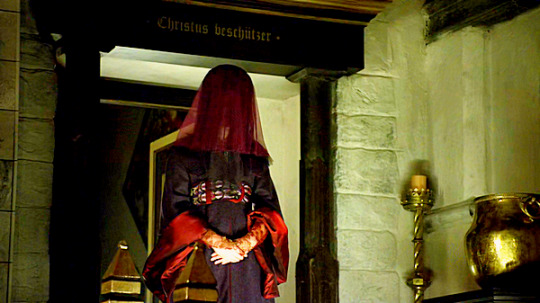
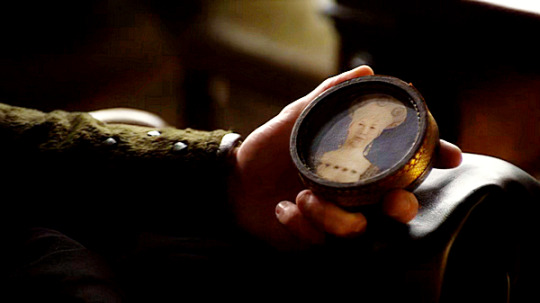
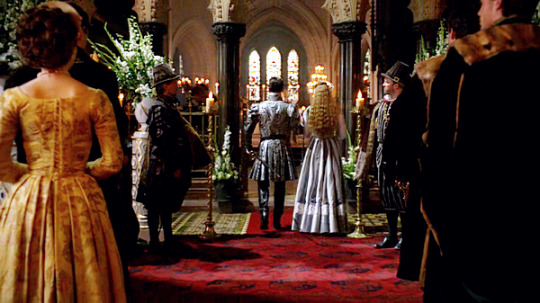

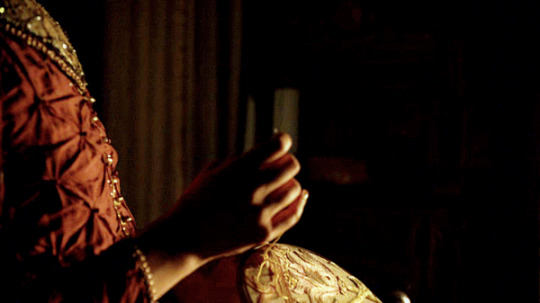
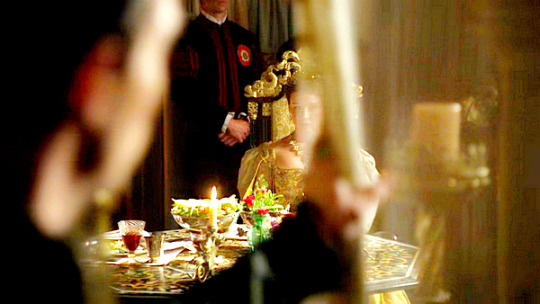


A N N E O F C L E V E S
"Anne was both intelligent and practical ... Thomas Cromwell lost his head for his role in the Cleves marriage, but Anne's shrewdness ensured she kept hers. She remained cheerful and obliging. Anne of Cleves set out for her marriage with high hopes and, in the space of less than a year, they were dashed." - Elizabeth Norton, Anne of Cleves: Henry VIII's Discarded Bride
#the tudors#thetudorsedit#joss stone#anne of cleves#my edits#caps#tudorscaps#dailytudors#tudorerasource
77 notes
·
View notes